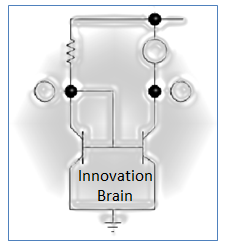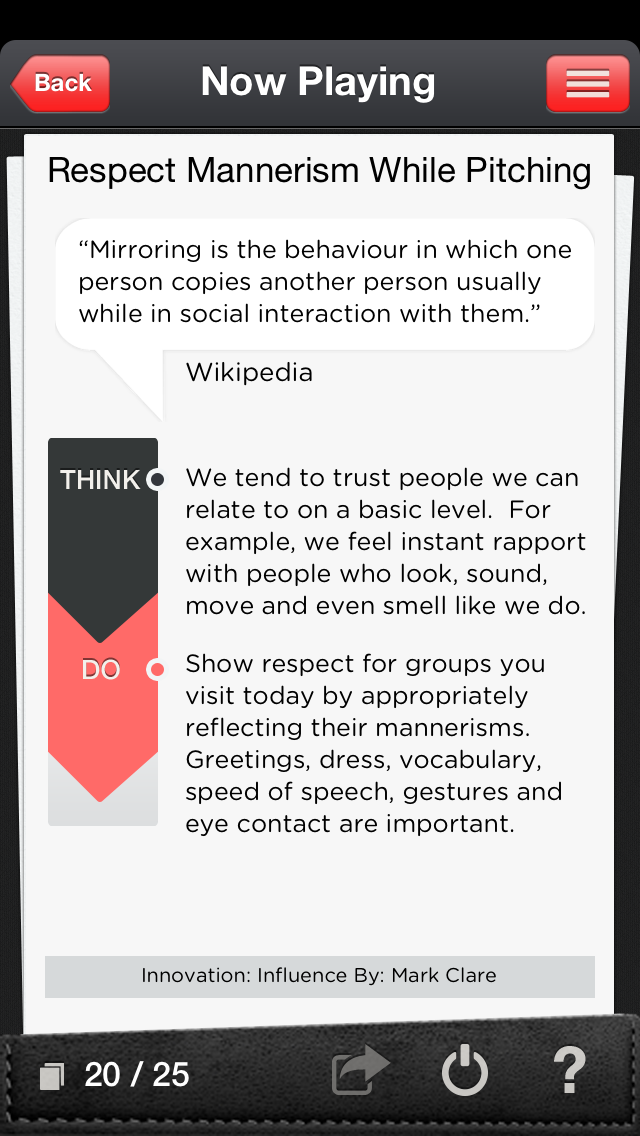Innovators are Influencers
 There is a lot of interest in getting better at innovation these days. While much of the focus is on creativity skill, a broader view indicates there are four areas you need to cultivate to build your innovation brain. These include:
There is a lot of interest in getting better at innovation these days. While much of the focus is on creativity skill, a broader view indicates there are four areas you need to cultivate to build your innovation brain. These include:
- Find or energize an innovation calling
- Reframe thinking to go in new directions
- Learn rapidly and deeply from experience
- Influence others to adopt new practices.
Surprisingly, the topic of influence seems to get the least attention. Innovators must convince others to invest time and resources in their raw ideas, persuade early adopters to try out prototypes and spend tremendous energy getting others to change behavior in order to grow a user base. Influence is a key to all phases of innovation.
There are many excellent books on how to get better at positive influence. Two of my favorites are the Influencer now in a second edition and How to Get People to Do Stuff. The Influencer advocates a focus on vital behaviors and provides a broad framework for crafting influence strategies. Get People to Do Stuff zeros in on the seven sources of motivation and provides very specific suggestions. For example:
“If you use nouns when making a request, rather than verbs – for example: “Be a donor” versus “Donate now” – it results in more people taking action. That’s because nouns invoke group identity.”
A careful read of both books reveals that they are recommending many of the same ideas. Indeed, I recently completed a review of over a dozen of the best books on influence and found they have five common themes and offer 25 best practices. The themes most relevant for innovators include:
- Craft compelling messages and stories

- Provide extra support to early adopters
- Be authentic, likeable & appreciative
- Master the five factors of innovation diffusion
- Leverage opinion leaders and indirect influence.
I’ve documented the 25 best practices as knowledge cards in the NewHabits, a free iPhone and iPad App. You play a card daily to experiment with and eventually master a proven influence technique. Cards are designed to fit into your everyday routine and take minutes to use. Each card is a small-step learning experience that accumulates over time into the habits of highly effective influencers.
An example card and table of contents for the deck is shown below.



.…
áëàãîäàðåí!!…
.…
???!!…
.…
tnx!…
.…
good….
.…
?????????….
.…
áëàãîäàðþ!!…
.…
tnx for info!…
.…
tnx for info….
.…
ñïñ çà èíôó!…
.…
good info!…
.…
áëàãîäàðñòâóþ!!…
.…
ñïàñèáî çà èíôó!!…
.…
ñïñ çà èíôó….
.…
hello….
.…
thanks….
.…
hello….
.…
ñïñ!!…
.…
ñïñ çà èíôó!!…
.…
hello!!…
.…
ñïñ….
.…
thanks for information!…
.…
thank you!…
.…
thanks for information!…
.…
ñïàñèáî!…
.…
ñïñ….
.…
áëàãîäàðñòâóþ!!…
.…
thank you!…
.…
ñïñ!!…
.…
ñïñ!…
.…
ñïàñèáî çà èíôó!…